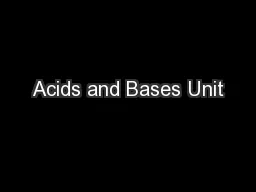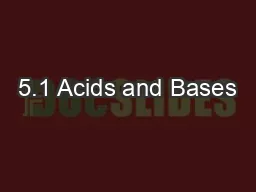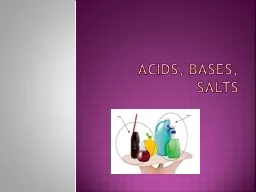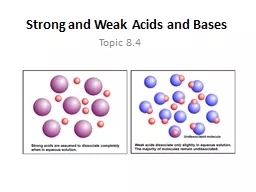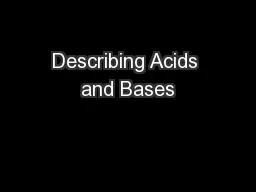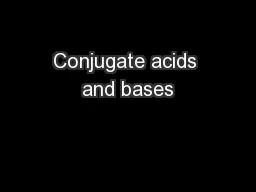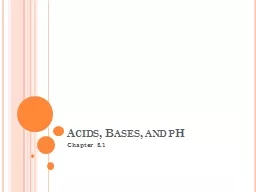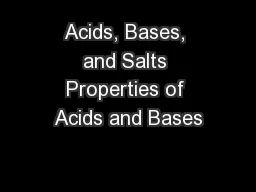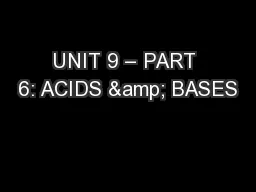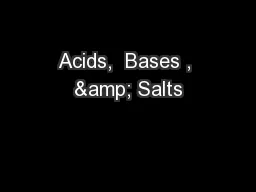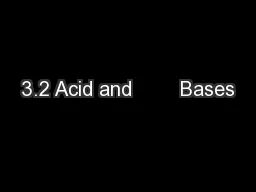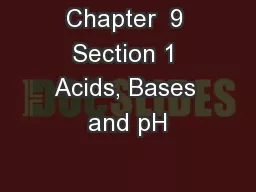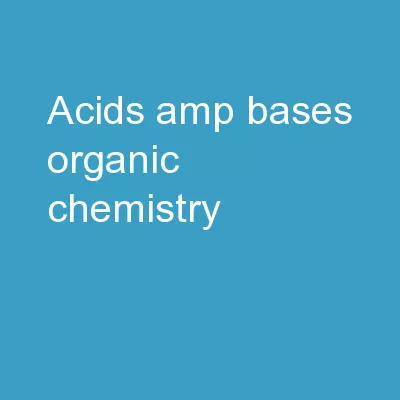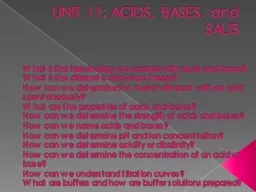PPT-Acids and Bases Unit
Author : danika-pritchard | Published Date : 2017-08-15
What is an Acid A solution with an excess of H 1 ions How do we know that a chemical is an acid Most Acids start with an H in their chemical formula What are the
Presentation Embed Code
Download Presentation
Download Presentation The PPT/PDF document "Acids and Bases Unit" is the property of its rightful owner. Permission is granted to download and print the materials on this website for personal, non-commercial use only, and to display it on your personal computer provided you do not modify the materials and that you retain all copyright notices contained in the materials. By downloading content from our website, you accept the terms of this agreement.
Acids and Bases Unit: Transcript
Download Rules Of Document
"Acids and Bases Unit"The content belongs to its owner. You may download and print it for personal use, without modification, and keep all copyright notices. By downloading, you agree to these terms.
Related Documents

